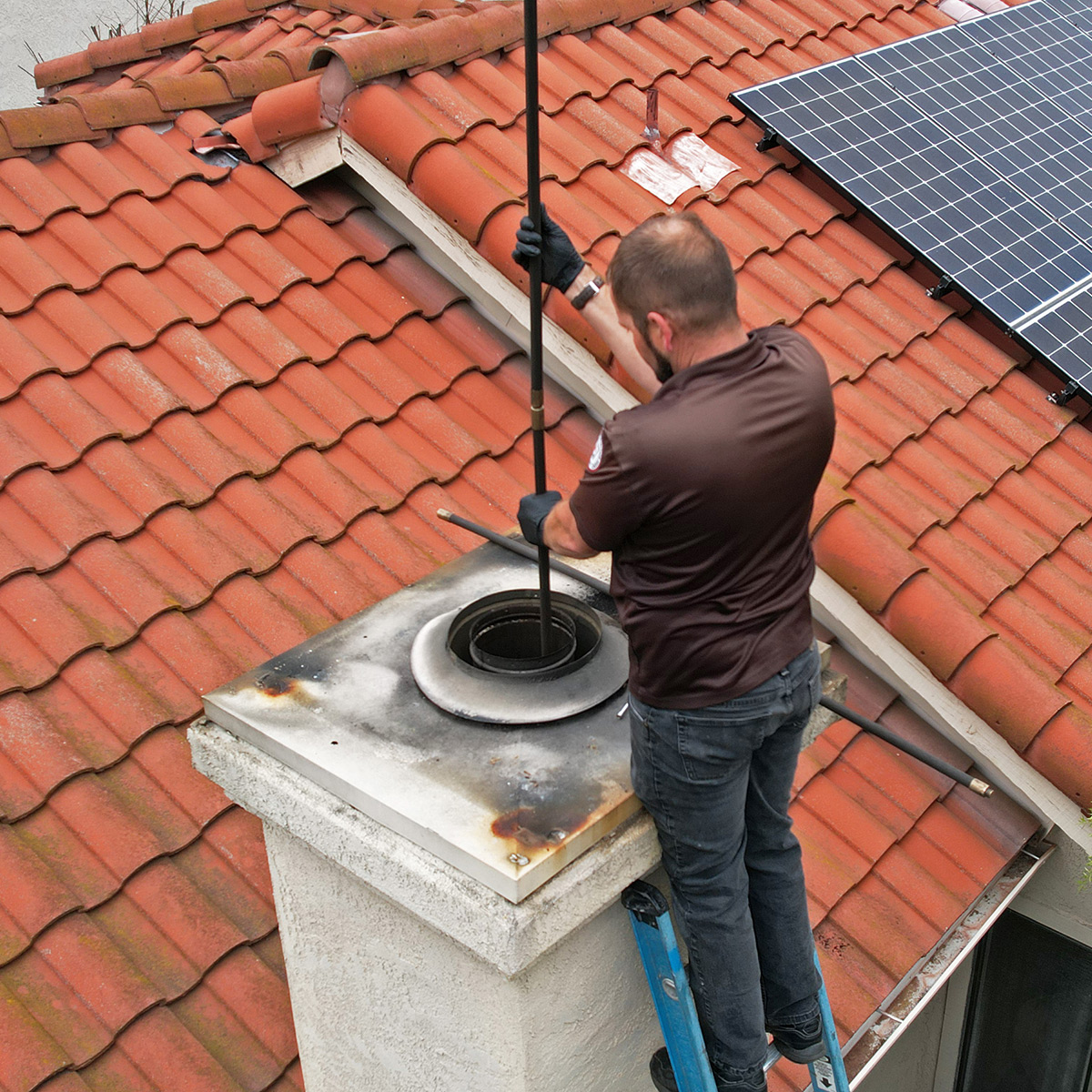The Ultimate Chimney Maintenance San Jose Checklist for Assurance
The Ultimate Chimney Maintenance San Jose Checklist for Assurance
Blog Article
Specialist Tips for Effective Smokeshaft Maintenance You Need to Know
Smokeshafts serve as important components in many homes, providing warmth and convenience. From the relevance of regular evaluations to risk-free operational methods, a thorough technique to smokeshaft upkeep is crucial.
Importance of Routine Evaluations
Normal examinations of chimneys are vital for ensuring their security and capability. Smokeshafts play a crucial role in venting out damaging gases and maintaining correct air flow in a home. In time, creosote build-up, debris, and architectural damage can occur within the smokeshaft, positioning severe risks such as chimney fires or carbon monoxide gas leakages.
Throughout a smokeshaft assessment, educated experts assess the problem of the smokeshaft, looking for any signs of damage, obstructions, or deterioration. They additionally examine the honesty of the flue, smokeshaft lining, and smokeshaft cap to make certain every little thing remains in correct functioning order. By identifying and attending to issues at an early stage, possible threats or pricey repairs can be stayed clear of.
Regular assessments not only help in maintaining the security of the smokeshaft yet also add to its general efficiency. A well-kept and clean chimney runs better, making sure proper ventilation and lowering the threat of indoor air pollution. Organizing annual smokeshaft examinations is a positive step that property owners can take to secure their building and liked ones.
Cleansing Strategies and Regularity
Maintaining the safety and security and efficiency of a smokeshaft involves not just normal inspections however additionally applying ideal cleansing methods and establishing the optimum frequency for cleansing. Smokeshafts need to be cleaned by a specialist chimney sweep a minimum of yearly, even if they are not regularly used. If the chimney is made use of consistently, particularly with wood-burning ranges or fireplaces, it may call for more regular cleansings to stop the buildup of creosote, a highly flammable material that can lead to smokeshaft fires.
Home owners should never ever neglect smokeshaft cleaning, as it is important for preserving a useful and secure smokeshaft system. Normal cleansings not just lower the risk of chimney fires but also enhance the chimney's general efficiency and durability.
Attending To Chimney Leaks

When attending to smokeshaft leakages, detailed evaluation and punctual repairs are critical to prevent water damages and preserve the structural stability of the smokeshaft. Leakages in a smokeshaft can lead to serious issues such as mold and mildew growth, degeneration of the chimney structure, and even possible fire threats. To effectively deal with smokeshaft leaks, begin by inspecting the chimney cap, crown, flashing, and stonework for any this post type of indications of damages or wear.
Understanding Creosote Accumulation
To recognize the prospective risks of creosote build-up in smokeshafts, it is vital to recognize its development procedure and impact on smokeshaft efficiency. When timber or fossil fuels are shed, Creosote is a brownish or black tar-like material that gathers inside chimney systems. As smoke increases via the smokeshaft, it cools and condenses, resulting in the development of creosote, which follows the smokeshaft walls.

Regular chimney assessments and cleansings by an expert smokeshaft sweep are important in stopping creosote accumulation and guaranteeing the risk-free procedure of your chimney system.
Safe Procedure Practices
Implementing correct safety protocols is necessary for the reliable and secure operation of chimney systems. When utilizing a fireplace or wood-burning range, it is critical to comply with particular security practices to avoid potential threats. To start with, always make sure that the chimney is properly inspected and cleansed consistently to eliminate any kind of creosote accumulation, which can result in chimney fires. Additionally, utilize a strong display or glass door in front of the fire place to stop embers or my latest blog post sparks from getting away and causing a fire in your house. It is also crucial to never ever overload the fire place with too much amounts of wood, as this can cause overheating and potential architectural damage.
Additionally, make certain to just melt seasoned wood in your fire place, as wet or eco-friendly timber can create even more creosote and trigger harmful chimney obstructions. Last but not least, never ever leave a fire unattended and always make certain the fire is entirely snuffed out prior to going to sleep or leaving your home. By adhering to these safe procedure techniques, you can take pleasure in a cozy and relaxing fire while making sure the safety of your home and liked ones.
Verdict
Finally, keeping your chimney is essential for guaranteeing its security and published here performance. Normal assessments, proper cleaning techniques, attending to leakages, taking care of creosote accumulation, and complying with risk-free operation techniques are vital elements of chimney maintenance. By remaining on top of these jobs, you can prevent prospective risks and extend the life expectancy of your smokeshaft. It is necessary to focus on smokeshaft upkeep to maintain your home cozy and risk-free throughout the cooler months.
Over time, creosote accumulation, debris, and architectural damage can take place within the chimney, posturing significant threats such as chimney fires or carbon monoxide leaks.
If the smokeshaft is used regularly, especially with wood-burning ranges or fire places, it may require more frequent cleansings to avoid the build-up of creosote, a very combustible compound that can lead to smokeshaft fires. (Chimney Maintenance San Jose)
To comprehend the possible risks of creosote build-up in smokeshafts, it is crucial to identify its development procedure and impact on chimney efficiency. As smoke rises with the chimney, it condenses and cools down, leading to the formation of creosote, which sticks to the chimney walls.
Always make certain that the chimney is skillfully examined and cleaned up routinely to remove any creosote buildup, which can lead to chimney fires.
Report this page